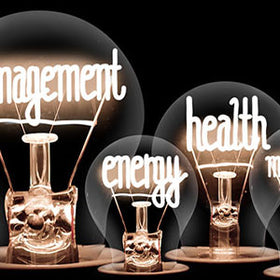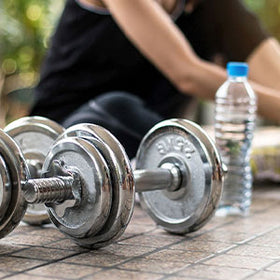Relaxation or Deep Tissue? Which is Best for You Right Now?
Relaxation or Swedish massage and deep tissue massage are both very popular types of massage therapy and found in a number of massage chairs. While there are some similarities, they are different from each other. The differences are:
- the pressure
- technique
- intended use
- areas of focus
When you understand the key differences between these two massage styles, you’ll be able to choose the right one for your needs at any given time.
What’s the Difference, & What’s Best for Me?
If you’ve ever complained about an achy back, sore muscles, or even the typical discomforts and pains of everyday life, you’ve likely been told by a well-meaning friend that “you need a massage.” You may be in need of a break when you release your tension and relax or you may need a more curative massage that works deep to get rid of adhesions and knots have persisted for a long time.

The good news is that massage is no longer a luxury that you can only get in fancy spas, health clubs, and cruise ships. And they’ve become more and more necessary thanks to our lives spent hunched, texting, and sitting for long hours of the day. Best yet, massage is now a possibility right in your own home thanks to massage chairs.
When considering a program to use in your massage chair, it’s important to understand exactly what you’re looking for. Two of the most popular forms of massage are deep tissue and relaxation massage. Familiarizing yourself with the differences between each type of massage will allow you to optimize your comfort, relaxation, and healing when you sit down in your chair.
About Relaxation or Swedish Massage
When you want a gentle, soothing experience that allows you to feel as if you were pampered, you should consider the relaxation massage. The main goal with this type of massage, which includes Swedish and Sleep options, is to leave you feeling, as the name suggests, relaxed.
During a relaxation massage, the rollers will be set to provide long, light strokes toward the heart that encourage a smooth overall flow for the body. If you need it, you can also incorporate kneading or gentle chopping motions to target specific areas of tension.
Swedish massage as a subset of the relaxation umbrella is one of the most commonly offered massage techniques in chairs. It’s occasionally referred to as a classic massage and aims to promote relaxation by releasing muscle tension.
Swedish massage is gentler than deep tissue massage and better suited for those who want a respite from the day in their massage and tension relief.
It can loosen up tight muscles caused by everyday activities like sitting and working at the computer or exercising. Relaxation massage is especially helpful for those with tension in their:
- lower back
- shoulders
- neck
What Happens During a Swedish Massage?
During a Swedish massage, the chair’s rollers will use:
- kneading
- long strokes
- deep circular movements
- passive joint movements
These techniques are designed to:
- relax you
- stimulate nerve endings
- increase blood flow and lymph drainage
This technique also attends to your whole body. Additionally, if you have a bit of tension in a particular area you can program the chair to spend extra time there.
What Happens During a Relaxation Massage?
Relaxation massages prompt a physiological relaxation response in your body. This is designed to slow your heart and breathing rate, reduce your blood pressure, help your muscles to relax, and decrease the production of stress hormones. Massage can even encourage your body’s production of serotonin, a chemical in the brain connected to general feelings of well-being and happiness.

Additionally, there are even more benefits of relaxation massage on top of the soothed, calm feelings. Massages are scientifically shown to improve your circulation, which itself has several benefits, including better flexibility and healthier skin. Massage therapy can also enhance your concentration and productivity, lower blood pressure, and even offers a small immune system boost.
Relaxation massage is best for alleviating everyday stress and loosening general tension in the muscles. Chronic pain conditions, injuries, and the like are better suited for a different type of massage because these issues are more likely caused by tension that’s buried deeper in the soft tissue.
Deep Tissue Massage
If you have a specific issue that requires attention such as an injury from athletic activity, an old car accident injury, or a condition that causes ongoing pain, swelling, or a limited range of motion such as fibromyalgia, a deep tissue massage is a better way to go. This is also known as a therapeutic or sports massage in some chairs.
A deep tissue massage is achieved by the rollers using firm pressure strokes to reach deep into your muscles and soft tissues. This allows it to target specific muscle groups. It is also employed to break up scar tissue, muscle knots, or adhesions, which are bands of painful, rigid tissue. All of which can disrupt your blood circulation.
A deep tissue massage can be full-body but tends to be more focused on a single area. Depending on the severity of your problem, you may need multiple sessions in the chair to notice a significant difference in the long term.
Deep tissue massage is similar to Swedish massage, but it reaches much farther into the muscles and is intended for a different purpose.
Deep tissue massage is best suited for:
- athletes
- runners
- people with injuries
It can also work for those with chronic pain conditions including:
- fibromyalgia
- lower back pain
Deep tissue massage targets the internal layers of your:
- muscles
- tendons
- fascia, or dense connective tissue

Deep tissue massage uses many of the same stroking and kneading movements as relaxation massage, but there’s far more pressure. This pressure can sometimes cause discomfort.
In order to reach the deep muscle tissue, the rollers in a chair will massage layer by layer of muscle, applying more and more pressure and employing special techniques with the nodes and ridges of the rollers and protruding out from the track farther and farther.
Healing is facilitated by this type of massage because it releases contracted areas of muscle and tissue. It can assist to increase blood flow to the soft tissues and can help to minimize swelling.
Unlike a relaxation massage, a deep tissue massage can be a bit rough. Throughout your massage, check in with yourself regularly to make sure you’re only getting as much pressure as you can handle. If it’s too much, stop or tone down the pressure to a lighter massage.
Deep tissue massage (or any massage that involves a lot of pressure) is not best for pregnant people either. Instead, you’ll want to consider more of a relaxation massage and look to avoid pressure points in the ankles and wrists.
Drinking lots of water before and after your massage will also help your body to flush toxins and feel better after your massage, especially when you get a deep tissue massage. You may also experience some pain post-massage, but that typically goes away after about 24 hours. If the pain doesn’t go away, contact your physician.
You may want to consider a deep tissue massage if:
- You experience chronic pain in a specific muscle group
- You exercise or engage in physical activity on a regular basis
- You have a job where you sit or stand all day or use repetitive motions
- You have a lingering injury
What Happens During a Deep Tissue Massage?
Deep tissue massages start as a more traditional relaxation massage. After your muscles are warmed up, the rollers in the chair will start to work deep into your problem areas and increase the pressure as it was programmed to do. From there, the massage will be pretty similar to a relaxation massage just with a fair amount of pressure and concentrated strokes on typically tight areas.
What Should You Do Before a Massage?

So, as you now know Swedish and deep tissue massages are very similar. When you’re in the mood for gentle, relaxing strokes a Swedish or relaxation massage is best, and when you want focused attention on problem areas and deal with chronic pain, you want deep tissue.
When you are about to begin your massage, you should consider and do the following:
- Think about your comfort levels. How much pressure do you want? Do you want the massage to reach down your back to your thighs or no?
- Think about your goals and expectations. Do you just want to relax? Are you looking to recover from an injury?
- What level of pressure is best for you?
- Warm up. If possible, warm up your muscles with a warm shower, a soak in the hot tub, or spending a few minutes in a sauna prior to your massage.
- Hydrate. Drink plenty of water before and after your massage.
The Takeaway
Swedish and deep tissue massages may be similar, but they accomplish different goals. The main difference is the amount of pressure involved. Feel free to ask as many questions as you need before and during your appointment. Be open about your comfort level, your goals, and your expectations. If you’re looking for relaxation and relief from tense, tight muscles, relaxation massage is probably right for you. If you have a specific issue, deep tissue massage can be a helpful part of your treatment plan.
Whatever route you decide to take, you’re sure to come out of it happier and stress-free.
Finished With Your Research?
You can look into the chairs, techniques, and other benefits of massage in the Learning Center on our website, and you’ll be able to see the physical benefits each of the styles offered and what to be prepared for from them.
If you have any questions or are interested in purchasing your first massage chair, check out our Massage Chair Buying Guide or give us a call. You can even reach out through email at info@massagechairplanet.com.
With all this in mind, don’t forget about our financing options. We understand that investing in a massage chair is a big decision, and we want to help make that process as simple and stress-free as possible. Our sales representatives are ready and excited to get you into the perfect chair!




